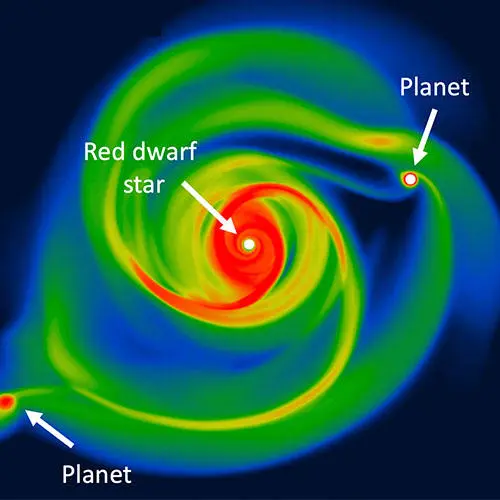Jeremiah Horrocks Institute for Mathematics and Physics secures funding from Science and Technology Facilities Council
Astrophysicists from the University of Central Lancashire (UCLan) have been awarded £1 million to fund two research projects focused on The Sun and planets beyond our own solar system.
The researchers, based in UCLan’s Jeremiah Horrocks Institute for Mathematics and Physics, secured funding from the Science and Technology Facilities Council (STFC) for two projects; ‘Explaining circumsolar Solar Energetic Particle events’, and ‘The structure and chemical composition of disc-instability planets.’
Professor Silvia Dalla and Research Fellow Dr Timo Laitinen will study solar radiation storms as part of a three-year project.
"The funding awarded acknowledges the high-impact astrophysics research that we do at UCLan."
— Dr Dimitris Stamatellos
During these storms, known as Solar Energetic Particles (SEPs) events, particles accelerated at the Sun are seen to fill the entire heliosphere (the region of space influenced by the Sun), including near-Earth space. The project will develop new numerical simulations that model how SEPs spread from the Sun to Earth and use them to interpret data from the recent space missions Solar Orbiter and Parker Solar Probe.
Dr Dimitris Stamatellos will also undertake a three-year study but this one will focus on events outside of our own solar system.
Working with a postdoctoral researcher, Dimitris will develop a combination of hydrodynamic and chemical models to determine the properties of exoplanets (planets that orbit a star outside of our own solar system) that form in gravitationally unstable disks of gas, known as protostellar discs, and orbit newly formed stars to provide predictions for current and near-future exoplanet characterisation missions for the James Web Space Telescope, Twinkle, Ariel and others.
Dimitris said: “The funding awarded acknowledges the high-impact astrophysics research that we do at UCLan and will enable us to build advanced computational models to understand the Sun and planets around other stars. We are very excited for the new results to start coming out.“
Findings from both studies will be published in the next three years.


